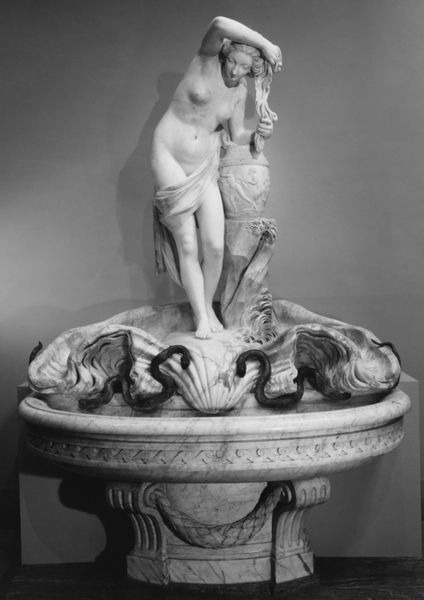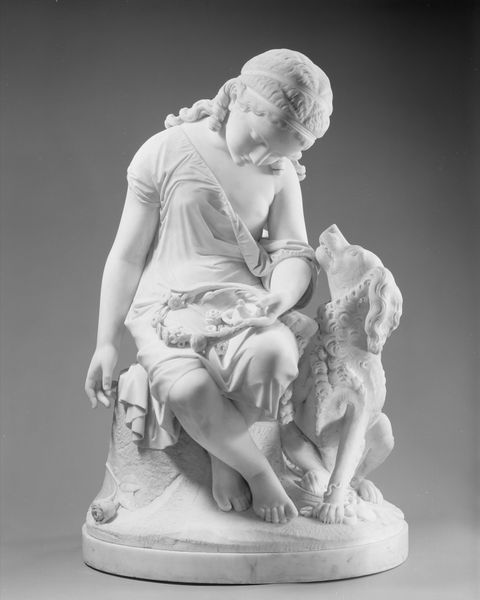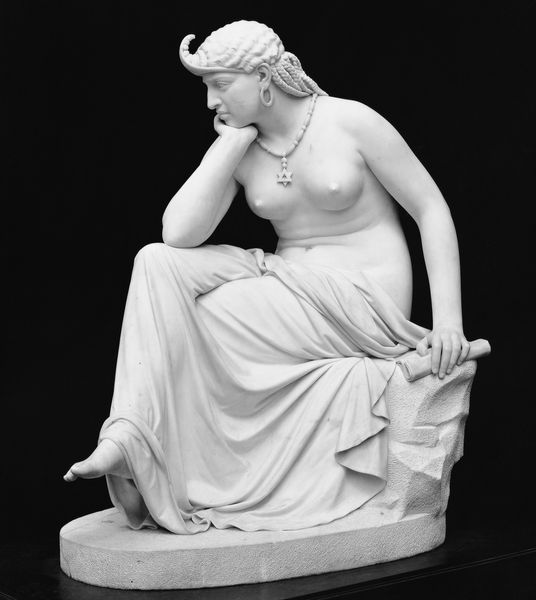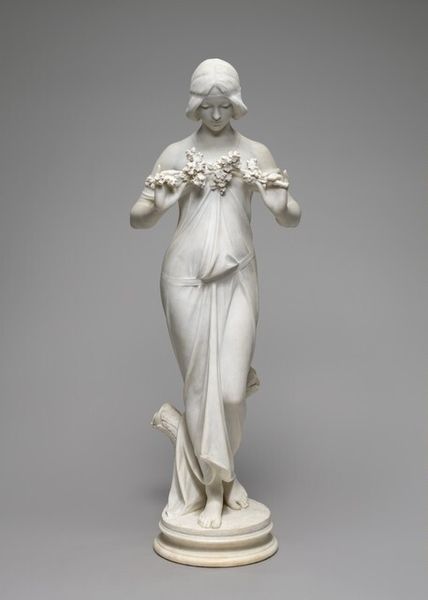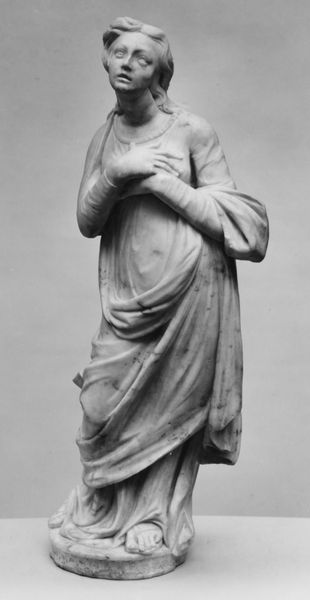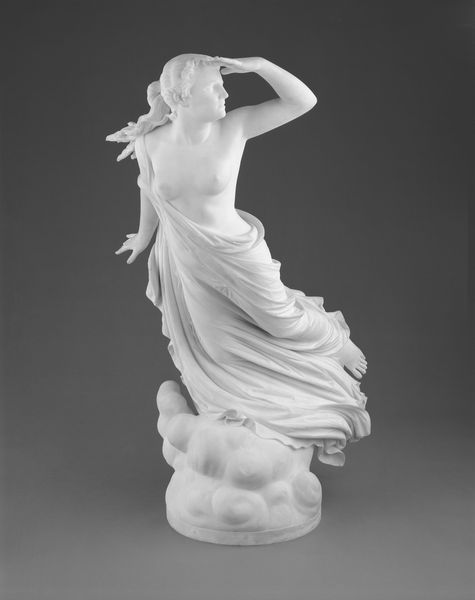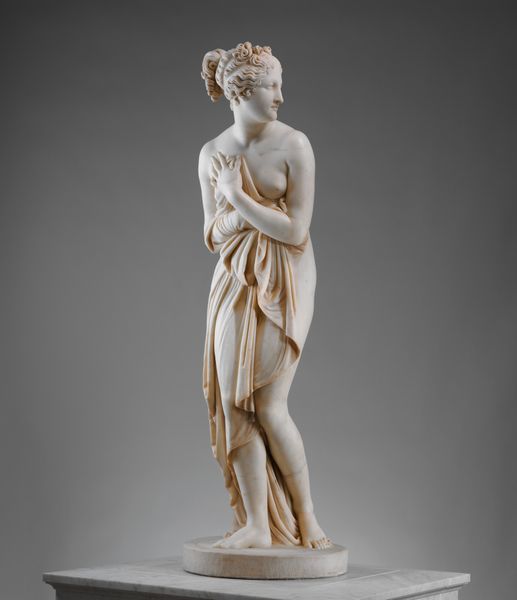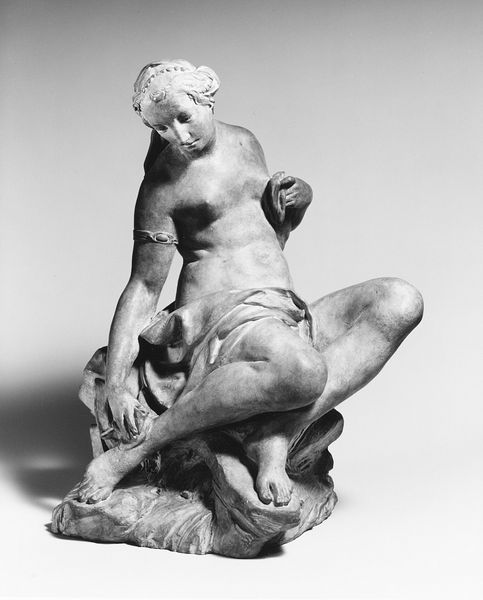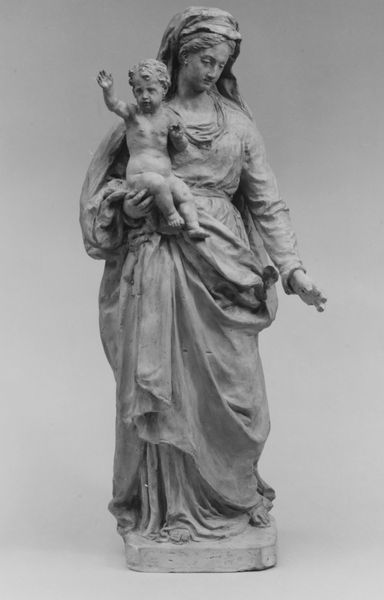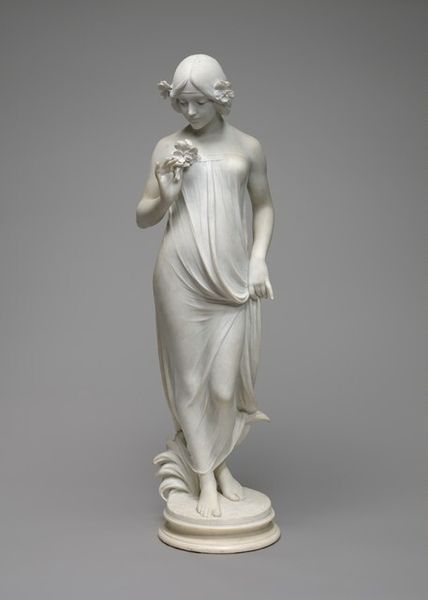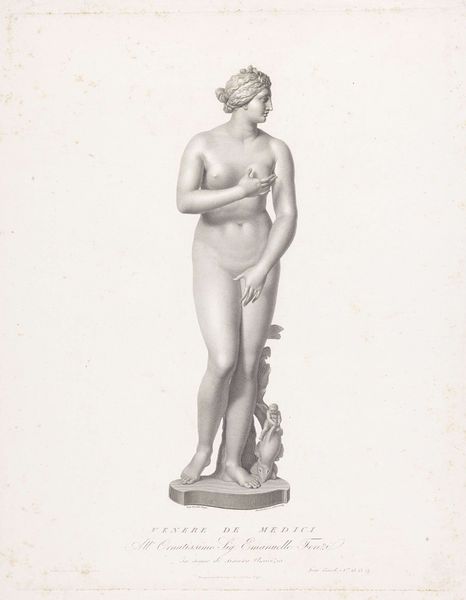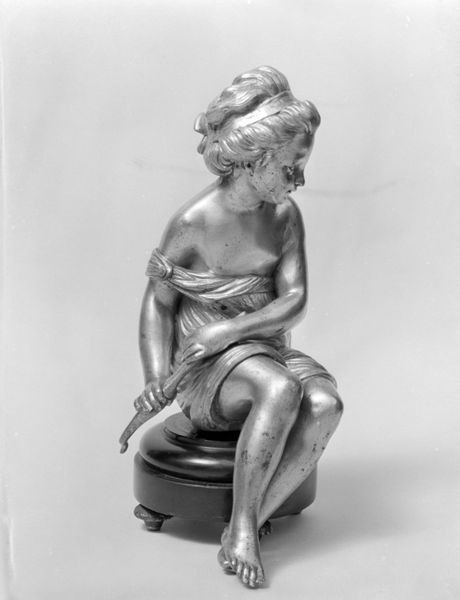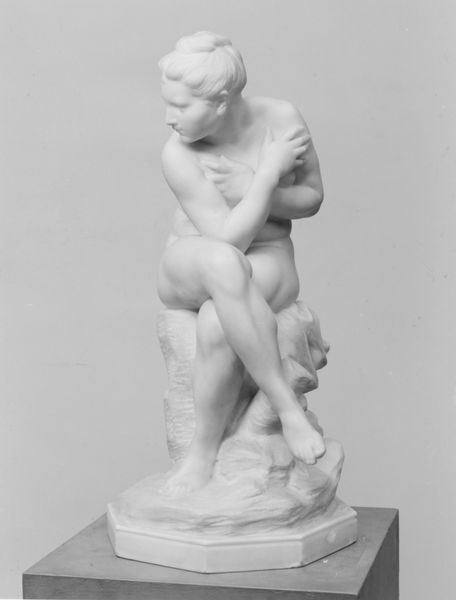
carving, sculpture, marble
#
statue
#
carving
#
sculpture
#
sculpture
#
marble
#
statue
Dimensions: 69.5 cm (height) x 61 cm (width) x 56.5 cm (depth) (Netto)
Curator: Georg Christian Freund completed this marble sculpture, titled "En lille pige, som plukker blomster" or "A Little Girl Picking Flowers," in 1848. It’s currently housed at the SMK, the National Gallery of Denmark. Editor: It strikes me as incredibly tender. The girl's downward gaze and gentle pose suggest a quiet intimacy with nature, almost reverential. Curator: Freund was a prominent figure in Danish Neoclassical sculpture. He often worked on public commissions, but also produced smaller, more intimate works like this one, catering to a burgeoning middle-class interest in sentimental themes. This work fits into a wider vogue for representing childhood. Editor: The symbolism seems so deliberate. Flowers often represent innocence and ephemeral beauty. She’s collecting them, almost attempting to hold on to a fleeting moment. Curator: Precisely. And consider the broader cultural context of the time. The mid-19th century saw a rise in Romantic ideals that intertwined with ideas about the importance of the domestic sphere and the role of women within it. A piece such as this played into the idea of women's moral purity, connecting women with nature. Editor: I see that. Also, look at her bare feet! That contributes to the air of vulnerable innocence that surrounds the figure, almost reminiscent of Psyche or other mythological figures of that time. It evokes purity but also accessibility. Curator: These works became incredibly popular through reproductions, especially plaster casts and smaller scale porcelain figurines, effectively shaping wider attitudes on femininity. It contributed to establishing and disseminating an idea of national identity, one where nature was linked to ideals of home and family. Editor: Understanding the artwork’s cultural resonance back then, and its artistic intention, gives one so much insight into why the statue looks the way it does and, possibly, why we're still drawn to it today. Thank you for adding to the appreciation of this beautiful work. Curator: It's my pleasure; this exercise only goes to show the lasting influence such pieces had.
Comments
No comments
Be the first to comment and join the conversation on the ultimate creative platform.
